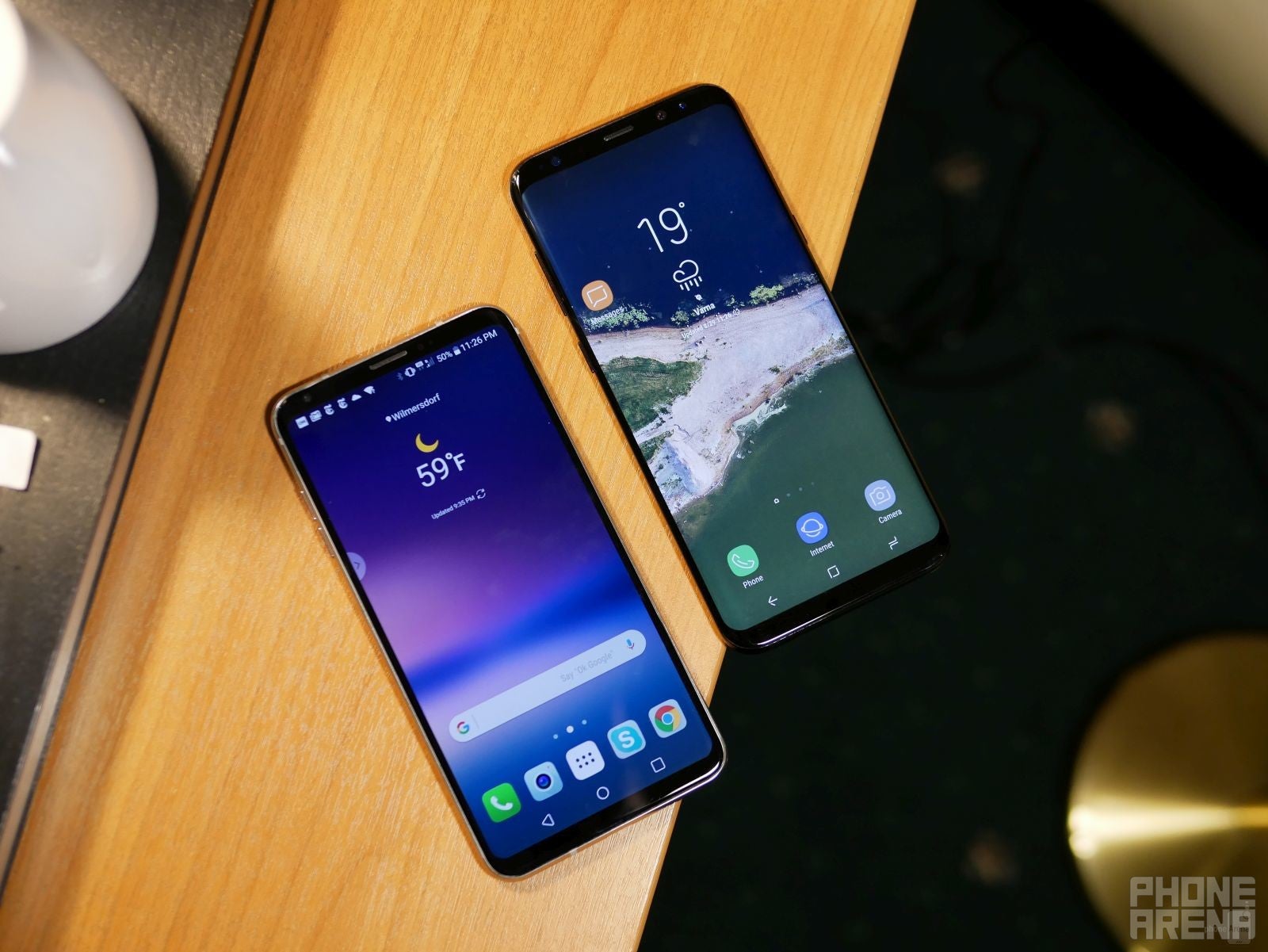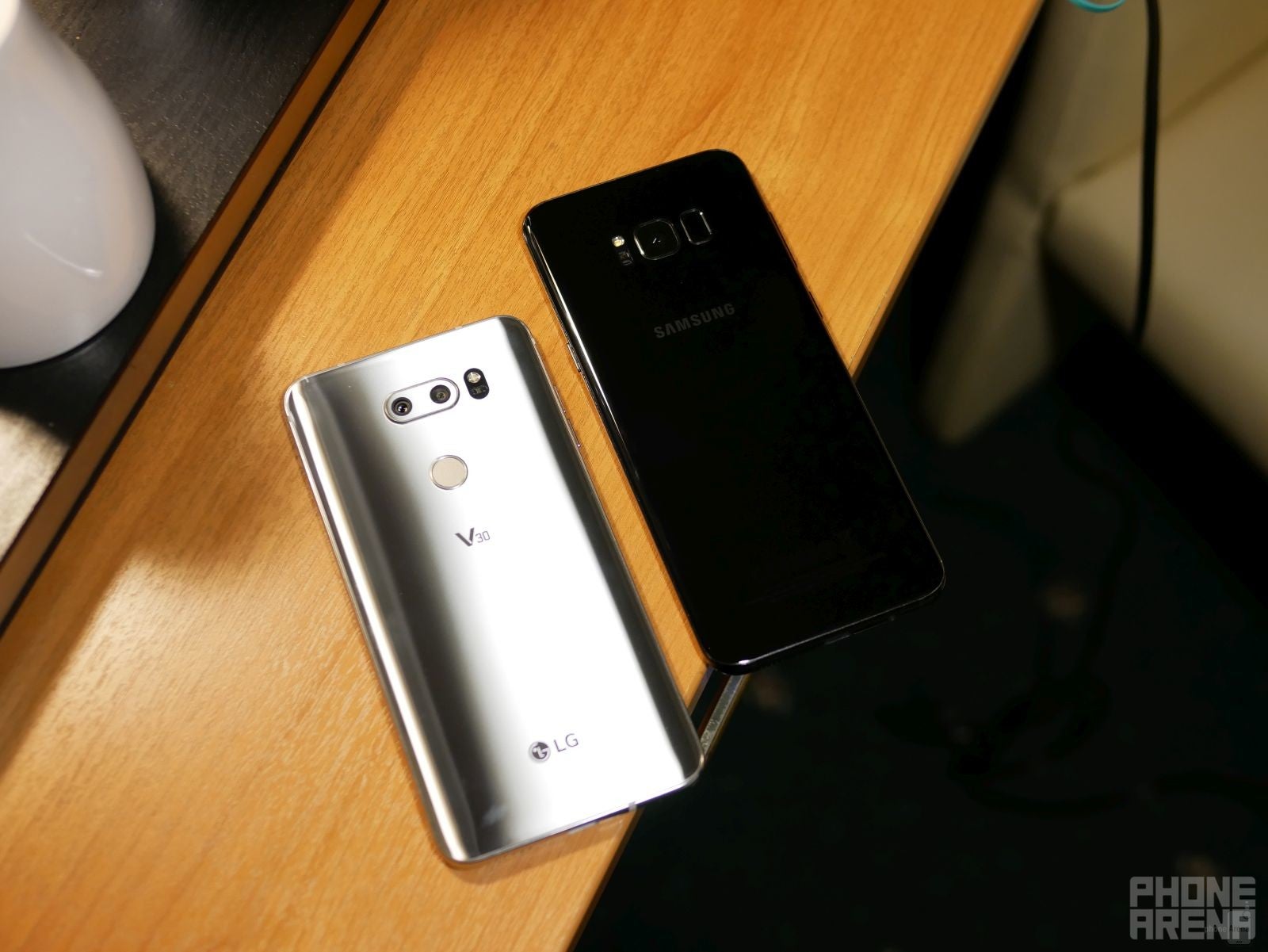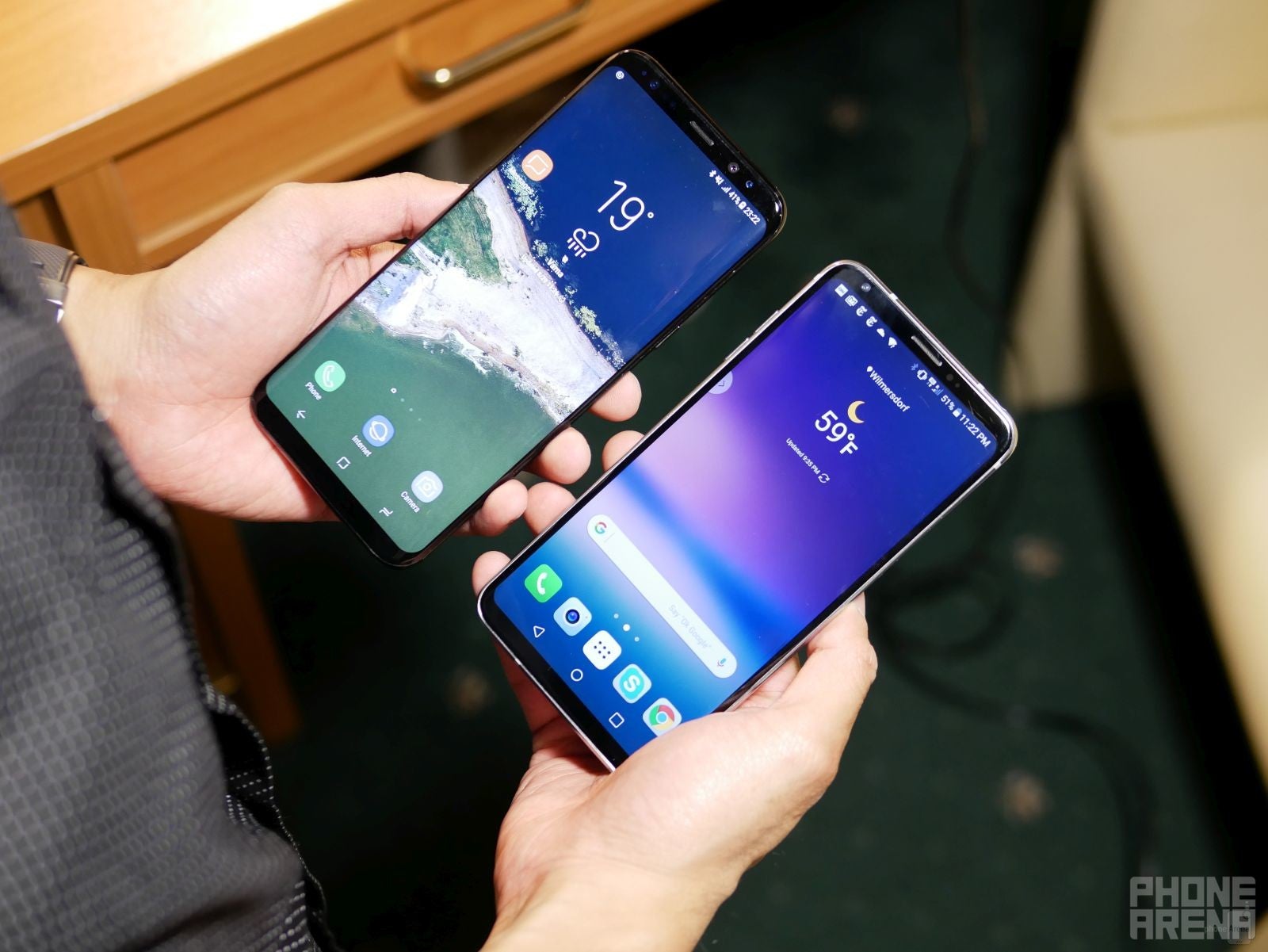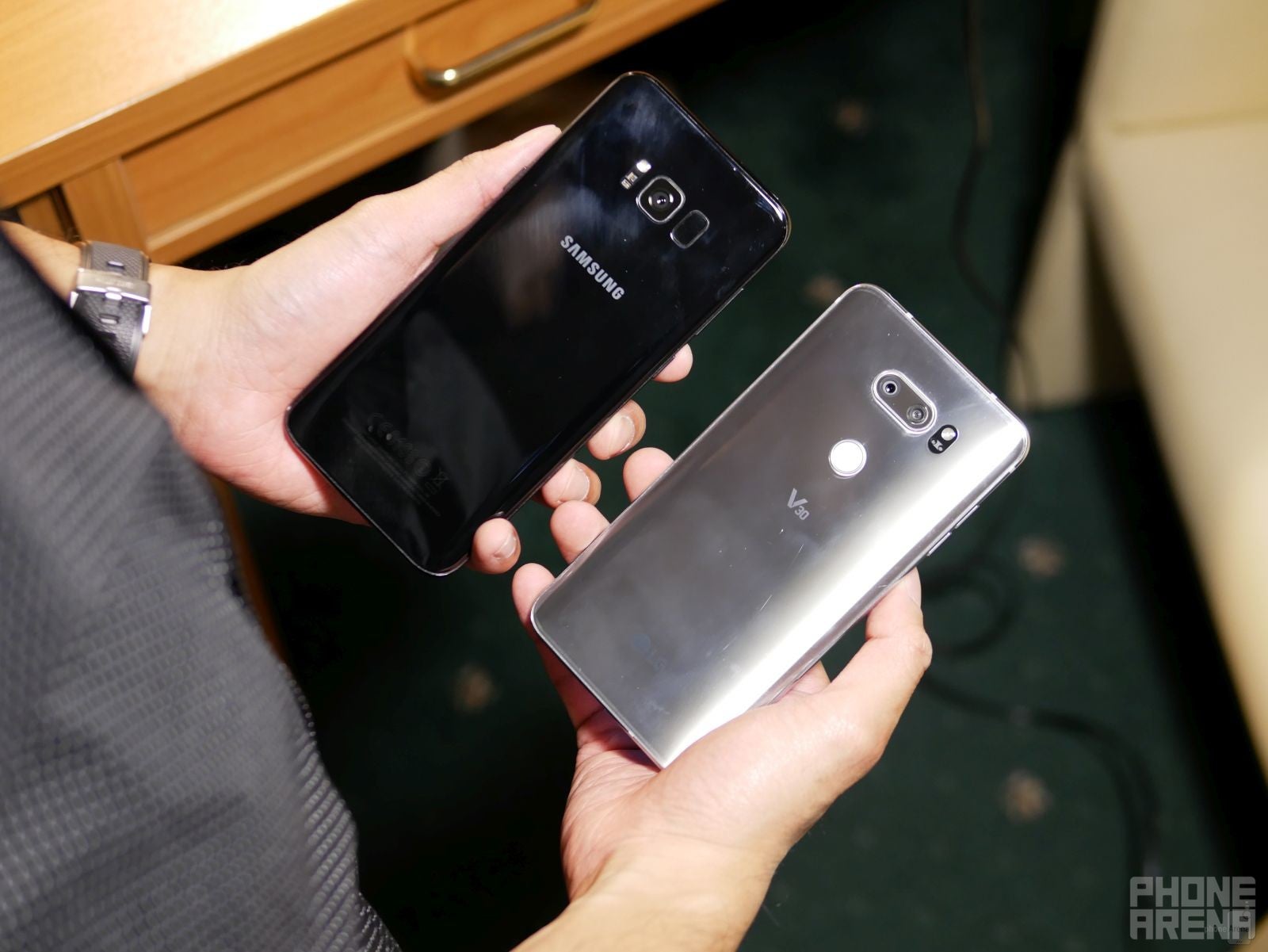LG V30 vs Samsung Galaxy S8+ first look comparison

It’s that time of year again when new phone announcementsstart ramping up. This week LG announced their flagship-level V30, which has uslooking all sorts of crazy ways at our old devices; for example, the GalaxyS8+. So, we figured now would be the proper time for these two devices to meetcordially, and fight to the death for our hard-earned money, no?
Design


Display

Interface and Performance

Samsung was once known for its ability to take high-spec’d,high-end phones and slow them down with their bulky UI. The Samsung Experienceaims to lessen this effect, organizing phone settings, and lightening up animations,and doing so to great effect. Issues with slow-down over time may stillpersist, but at least initially the device is lightning quick, just as the V30is.
We’d be remiss in not mentioning the V30’s Quad-DAC Hi-Fisetup. This little goody adds not only the ability to listen to Hi-Res audio,but the ability to record in high quality as well. This is a great addition forthose who love music, and those who love to create. Speaking of which..
Camera

The V30 is very oriented towards those who like to createvideos and photos with their phones, though, and as such would not be outdone(for now) by any phone when it comes to features. Many shooting modes exist forthe V30, including a few for fun and social media, but also some for betterfunction. The coolest and most useful addition is a feature named GRAPHY, whichallows users to select professionally taken photos (which are similar incomposition to the photo they’re about to take) from which the exact settings ofthe camera used to take the photo will be extracted and applied to the user’scamera, so that they can have the fine touch of a professional in their ownshots – pretty nifty stuff. While the S8+ has a few pre-installed shootingmodes, and a couple to download, nothing comes close to this in terms offeatures and function.
Pressing onward into the list of camera-related featureswhich the V30 lords over the S8+, video shooting also proved quite important toLG, and topping their competitors seems like slight work here – at least interms of offering such useful features. LG’s Cine Video feature adds four maincomponents to the video shooting, andproducing prowess of the V30. This suite includes; Point and Zoom, which locksfocus on a specific part of the screen and allows the user to zoom in on itsmoothly; Cine Effect, which contains 15 different movie-genre-inspired filtersto film with; Cine Log, which facilitates easy editing in programs like AdobePremiere; and Video Studio, an on-board editing software which allows you towork with multiple photos and videos, as well as add after-effects to yourmobile masterpiece. Please excuse us while we try to remember the other phonein the comparison here.
Oh, that’s right, the S8+. Well, like we said. The camera onthe S8+ is one of the best in the game, but is that enough still? With the V30closely behind it in performance, the answer to that question may be easier forsome than others. Of course, part of it will come down to preference, but atthe same time, why not gain a great wide-angle lens, and deep video creatingoptions? That may be the harder question to answer.
Conclusion

Ultimately, the S8+ and V30 represent some of the best thatthe mobile market has to offer right now. Designs are beautiful andincreasingly functional, while performance is a category in which it’s becomingharder to create meaningful distance – which is great for us customers! That doesn’tmean some manufacturers can’t screw it up, with confusing bloated software, orbad battery life, but these issues don’t seem to afflict either device. Thecamera, and the features within, are easily the biggest separators between thetwo. So, which one of these gorgeous devices checks all the right boxes foryou?








![A new Android bug is making it impossible to install new apps. Are you affected? [UPDATE]](https://m-cdn.phonearena.com/images/article/176703-wide-two_350/A-new-Android-bug-is-making-it-impossible-to-install-new-apps.-Are-you-affected-UPDATE.webp)

Things that are NOT allowed:
To help keep our community safe and free from spam, we apply temporary limits to newly created accounts: